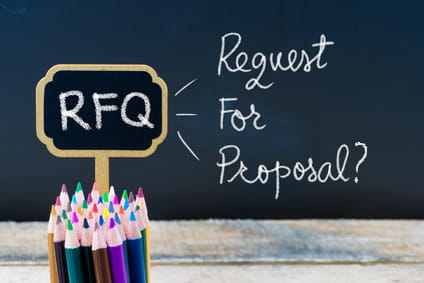Podcast: Sales Training on Price Increases
This podcast and transcript accompany our comprehensive sales training guide on how to achieve your sales price increase.
Paul: How do sales professionals feel when they hear their bosses’ words: “We need you to go get us a price increase”? Most salespeople love asking for price increases about as much as getting a root canal. Sales professionals worry about hurting the customer relationship they’ve worked so hard to build, and fear losing the business.
This is Negotiation Expert Paul Kinsella.
Calum: And this is Negotiation Expert Calum Coburn. In this podcast we’ll be discussing our ‘sales price increase’ post—the world’s most comprehensive guide on increasing your sales price for B2B sales professionals. You can use the search feature to find the sales training price increase article on negotiations.com. You’ll also find a free online assessment and summarizing infographic linked to on the same page.
In writing our definitive guide on getting a price increase, we’ve drawn from our experience delivering customized negotiation training across industries including high tech, manufacturing, aerospace, M&A, insurance, retail; with clients that include Honeywell, Shell and Cisco.
Paul: You’ve spent most of your time training both sellers and buyers in 37 countries, and there’s something you wanted to say to the buyers?
Calum: Yes, I’d like to start… with an apology.
To our procurement, purchasing, and contracts graduates, I hope you will forgive me for putting out these resources for sales professionals… and not having something for buyers. We’re not playing favorites; we’re not intentionally giving sales an unfair advantage. I hope that our buyer graduates understand that we have limited time to create in-depth resources like these. So, if you’re a buyer, get in touch, and we’ll consider creating a “buyer price discount assessment.”
In case you’re wondering, Paul has an Irish accent and I have a speech impediment known as a South African accent.
Paul: In this podcast, Calum will be sharing practical advice and observations from The Negotiation Experts’ global clients. When you have a moment to invest in upping your price increase sales negotiations game, go back and read the full post—I’m confident it’ll be worth your investment of time.
While these resources should dramatically raise the probability of your getting a price increase over the line, don’t fool yourself into thinking that resources like this are a substitute for investing in raising your negotiation skills by graduating from a top sales negotiation training seminar. The skills required to repeatedly win price increases is a subset of your overall sales negotiation skills.
At the end of each section in this podcast, I’m going to illustrate by returning to a story — a story about Emma. Emma is a senior account executive who invests four days per week keeping two large accounts happy, and on the remaining day she works on converting new accounts. Emma’s sales manager gathers the team for a sales meeting and tells them: “Our costs have gone up, and it’s eating into our margins. We need you to go increase our prices by 5%.” Emma and her colleagues look anxiously around the room at each other. Emma and her colleagues ask for more detail and are promised some numbers from finance. When Emma gets back to her desk, she looks through her two major customers’ contracts for their expiry dates, and what they have to say about price escalations. One contract expires in three weeks; the other customer has a three-year contract, which was agreed just a few months ago. While Emma’s customers could purchase most of her company’s products from a competitor, Emma’s company’s services are the main reason her customers keep on coming back.
We’ll be returning to Emma’s story at the end of each section.
Next Calum will start talking about each section from the blog post. He’ll be including some practical pointers in this podcast that don’t appear in the post:
Choosing your Opening Price
 Calum: We’ve proven that in negotiations the single best predictor of where we finish up is where we start from. Too many sales professionals have skinny kids simply because they don’t start ambitiously enough.
Calum: We’ve proven that in negotiations the single best predictor of where we finish up is where we start from. Too many sales professionals have skinny kids simply because they don’t start ambitiously enough.
This is usually the main reason why salespeople find their backs up against the wall later in the negotiation, with the customer either forcing further concessions, including bleeding margins, or worse: using your concessions as leverage to get a better deal out of your competitor.
Apply your ambitious opening position beyond pricing. Think about every dimension of your product/service offering. What should your going in or opening position be?
If your customer is a professional buyer, you don’t want to invalidate them. How do you invalidate a buyer? You rob your buyer of the opportunity to negotiate with you. So, give yourself some room to negotiate by asking for more than you are willing to accept, or by offering less than you’re willing to give. Your buyer will feel good about themselves when they manage to curtail your ambitions. I’m going to share with you what happens in the buyer’s world after you leave their office. Your buyer will likely be telling their boss or internal stakeholders how well they performed, measured against—guess what?—your opening price. Your buyer’s single most important KPI discussed in their performance review is likely to be… cost savings.
Returning to our story. Emma was initially thinking of asking for a little over 6%, but then remembered that both of her major accounts’ buyers are hard-nosed or competitive when price is mentioned. So, Emma then thinks of starting with 10%, but she remembers someone warning her that 10% sounds like a made-up number—so 10% is much more likely to invite attack. Emma decides to go in with a 9% opening price. She has a new support service she can offer her customers for free for the first year and has chosen not to add this sweetener until later in her negotiations. Emma wants the buyers to feel like they earned their concessions.
Best Alternative or BATNA
Calum: Don’t be an ostrich by burying your head in the sand and hoping your customer won’t switch suppliers. Many times, your customer won’t give you much or any warning before switching to your competitor. It’s sometimes hard to distinguish between empty threats from buyers to real threats that have backing amongst your customer’s various decision-makers. Keep lines of communication open. Talk with as many departments in your customer’s organization as possible—and do this long before it’s time to implement your price increase. Gauge their appetite for switching. Sketch out who in your customer’s organization is for staying with you, who is neutral, and who is against you and more likely to switching to your competitors. Figure out the decision-making power of each customer stakeholder. Then get to work influencing the key people to guard against switching. If you have the time, then talk with each customer stakeholder individually. We reveal more in 1:1 conversations than when our colleagues are listening.
Customers are most likely to switch to your competitor when they’re unhappy with you. So do your best to ensure your customer’s key decision-makers are happy when you announce your price increase.
Back to Emma: Emma gets in touch with a colleague in operations and asks how things are going with the dispute from one of her two biggest customers. After she’s up to speed on the latest facts, she puts together a potential solution, which she hopes will quickly and affordably resolve the dispute. Emma doesn’t want the customer’s buyer using the dispute to derail her price increase.
Emma then looks over the organizational charts she’s sketched for her two major customers, predicting who her supporters are and who she needs to win over or neutralize. She sets up phone and in-person meetings with her customer’s decision-makers and decision influencers. Emma wants to create as many allies as possible in her customer’s organizations before she meets with their buyers.
Emma wonders if her biggest competitor has changed their offering recently, especially their pricing. Emma contacts a new prospect she’s friendly with. Emma has been invited by this new prospect to participate in their RFQ. Emma didn’t want to participate in their RFQ because of the size of the deal, and the buyer knows this and was appreciative of her deciding to participate. Emma calls the buyer to find out how much the offering of her biggest competitor differs from hers. Emma learns that her pricing is more competitive for the same product she sells to her two major customers. She breathes a sigh of relief and updates her SWOT analysis for her two biggest customers to better understand her competitive position.
Why Are You Increasing Your Sales Prices?
Calum: It’s worth preparing for the worst and most likely questions. Write out their questions and your responses. If you’re negotiating over the phone, you can read your answers—just be sure to deliver your response naturally.
Decide on the level of detail you’re prepared to share. Be careful not to tell your customer commercially sensitive information that you would not normally be prepared to tell them. Some sellers reveal too much information in challenging negotiations, such as price increases, and live to regret their decision next time around when the customer expects the same level of disclosure.
Athletes practice long before the tournament day, and so should you. It’s worth rehearsing answering your customer’s questions with a colleague. You’ll feel more confident, and together you’ll come up with better responses.
When Emma receives the spreadsheet from finance showing the drivers for her company’s cost increases, she realizes that some of her customers’ products are impacted by up to 20%, while other products costs are hardly affected. So, Emma anticipates squirming when her customers ask her why she’s increasing the prices across ALL their products. She needs a message she can defend. She meets with her sales manager to ask if she must increase all products by 5%, or if she can instead apply differential price increases across her portfolio of products. Emma calculates that her risk of losing orders is lower if she applies differential pricing than a blanket 5%. So, she changes her plan from a blanket 9% to creating a spreadsheet with prices she feels more confident in defending. Emma clears off what she’s allowed to share and what she should keep confidential. Emma’s sales manager cautions her not to share too much, since her customer’s buyer will demand the same level of disclosure in future negotiations once she sets a precedent.
Friendly Fire
 Calum: Too many leaders step in to take over negotiations for the wrong reasons. When leaders hear from a senior counterpart in your customer’s organization, they fear losing the business. Even if your leader does a sterling job of leading negotiations this time around, the message your leader is unwittingly sending your customer is: Anytime you’re unhappy with negotiating with one of my team, I’ll take it over and give you a second shot at getting the deal you really want. Leaders are more strategically focused. Part of the risk is that leaders typically lack their team’s depth of customer intelligence, product or service knowledge, and competitor knowledge.
Calum: Too many leaders step in to take over negotiations for the wrong reasons. When leaders hear from a senior counterpart in your customer’s organization, they fear losing the business. Even if your leader does a sterling job of leading negotiations this time around, the message your leader is unwittingly sending your customer is: Anytime you’re unhappy with negotiating with one of my team, I’ll take it over and give you a second shot at getting the deal you really want. Leaders are more strategically focused. Part of the risk is that leaders typically lack their team’s depth of customer intelligence, product or service knowledge, and competitor knowledge.
At lunch with her sales colleagues, Emma asks what’s happened in the past when an unhappy customer has escalated to their manager. Emma learns that her manager has a track record of taking over negotiations with minimum support. So, Emma schedules another meeting with her manager to agree what will happen in the event of the customer escalating to her manager. Emma prepares a full briefing to both bring her manager up to speed and impress upon her manager that she’s done a great job in preparing, and so she should be trusted to go the distance with the price increase if one of her customers tried to escalate to her manager.
What’s Better Than a Price Increase?
Calum: There are usually revenue-boosting or cost-reducing ideas that can offset part or all the need for a price increase. The threat of a price increase can prove to be a powerful catalyst, propelling your customer into collaborating with you. Since your customer is far more likely to endorse their own ideas than yours, part of the skill in selling your ideas rests in holding back on sharing your ideas, and instead asking your customer to make suggestions. Some well-honed questions can tease your best ideas out of your customer’s mind. Ensure you get your leadership open to the idea of offsetting your full-price increase, as a price increase can sometimes become a strategic initiative against which you and your leadership will be measured.
Talk with your colleagues about their ideas for offsetting a price increase. There’s typically immense knowledge and creativity in sales teams that goes untapped.
Emma goes through her Trading Plan from her most recent negotiations with her customers, to remind herself of what was offered and requested. Emma uses this opportunity to write down her questions for each of her customers’ decision makers. She wants to figure out what to change to sweeten the deal. Emma meets with a couple of veteran sales colleagues to find out what they’re doing differently with their accounts. She then talks with her colleagues in marketing and R&D to find out what changes they have planned with her products. Lastly, Emma walks her sales manager through her ideas to ask “what if” questions, and gets authorization to offset price increases if her customers buy into her ideas.
High-Low Leverage
Calum: We expand on the previous exercise by focusing on discovering what the customer values. Our clients are often able to discover previously overlooked bargaining chips. Some people call these minor currencies. The best bargaining chips are those items the decision-makers in your customer’s organization value highly, which cost you little to nothing. See the handy table in the full post. Systems and engineering sales professionals call these MIRs, or “Most Important Requirements.”
Too many of our clients admit to giving away or steeply discounting those services which cost them little or nothing. Maybe you inherited your account along with an agreement that is far from optimal. Sometimes your customer is unclear on their own rankings. One way for your customer to realize what they value the most is through your asking “what if” questions.
To unlock value in a suboptimal agreement, consider whether you only wish to talk about price. Perhaps it would serve you better to make a complete package offer, including most dimensions of your contract. Yes, this does take longer, and yes this is usually what’s required to create more mutual value.
Still looking at her Trading Plan from her last customer negotiations, Emma focuses on her ranking of her goals and her estimations of each of her customers’ decision-makers’ ranking of their goals. Emma plans to be ready to renegotiate everything should this be an option. She also looks at the ranking of goals for each of her customers’ major decision-makers, and then compares which goals and rankings overlap and which decision-makers differ. Emma discovers some of her customers’ “must-haves” that she can use as leverage and some areas that are costing her company that she believes her customers’ decision-makers don’t value highly. She identifies these items as services she hopes to be able to reduce or do away with to make savings on. This can reduce her price increase. Even if a customer doesn’t agree to do away with these lower-value services, she’ll have won their trust by demonstrating her determination and professionalism to discover ways to offset the price increase.
Loss Framing
Calum: I wish that the latest discoveries from brain science were better understood. Salespeople can save themselves a LOT of time and close more deals faster when they understand how we make decisions. In short, we decide with our emotions, and then we backwards rationalize our decision. If salespeople knew this, most would change their presentation packs and pitches dramatically.
The main takeaway to keep at the front of your mind is this: Your customer will almost always buy to avoid risk and end their pain, before they’ll buy a shiny new blue-sky solution. Virtually every sales methodology understands this, starting perhaps with SPIN selling. So, I’ve watched this message make its way through the seller’s collective consciousness over the past couple of decades.
What’s the best way to hit the bullseye for your customer’s needs? By building trust and then taking aim with well-crafted questions. Questions are so powerful that they need to be written down. You’ll find as soon as you do start writing, you’ll be rewriting and resequencing your questions. The challenger sales model’s challenger salesperson needs to be skilled at crafting and asking challenging questions, which includes loss framing.
Emma looks through the SWOT analysis she has prepared for both her major customers, and focuses on their Threats quadrant. She maps across her company’s SWOT, specifically her company’s Strengths, which should save her customers from their perceived risks. She writes some questions out to ask her customers, ensuring some of her questions focus on her customers’ risks. Emma aims to challenge her customers to have a meaningful conversation about their needs, and then how her customers’ needs can be met by her products and services.
RFx Threat
 Calum: The ‘x’ from RFx most often stands for QTPI—so RFQ, RFT, RFP, or RFI. If you want to know more about the differences between these, we have a very popular RFx post on our site.
Calum: The ‘x’ from RFx most often stands for QTPI—so RFQ, RFT, RFP, or RFI. If you want to know more about the differences between these, we have a very popular RFx post on our site.
The best response to being invited to participate in your customer’s RFx is to offer to write your customer’s RFx for them. You understand your customer’s needs in detail since you’ve been serving their needs, so you should be highly qualified to support your customer by writing their RFx. If you get to author or coauthor their RFx, you stand a very high probability of winning their RFx. If you don’t write their RFx, then it’s best to only participate if your competition did not write your customer’s RFx.
If you’ve calculated that the customer’s decision-makers don’t wish to switch suppliers, then consider not participating in their RFx. If you don’t participate in the RFx, you’re effectively calling your customer’s bluff. Too few sellers opt for this path. The main reason is leadership too often won’t give their blessing to not participate. If you’re able to not participate in the RFx, be careful to leave your door to further conversations and negotiations open.
If the buyer continues talking with you instead of progressing with their RFx threat, then you will know their RFx threat was merely a tactic. You want to give your buyer an easy out, thereby allowing them to save face. Don’t rub their nose in the fact that they need you—else you’ll risk turning a rational business negotiation choice into an emotion-fueled personal vendetta.
Emma remembers that one of her customers issues RFP invitations every year, while her other customer prefers to have three-year contracts with no RFx at the end of each contract. Emma contacts a colleague who looked after her accounts before her, and learns that the multiyear contract account has never put any business that‘s under contract out to tender. Emma breathes a sigh of relief. Emma revisits her SWOT analysis and attaches a probability of a competitor winning an RFP for her single-year contract, should her customer put her business out for tender. In one of Emma’s meetings with her sales manager, she learns that leadership will highly likely insist on participating in a RFx.
Timing
Calum: I’ve seen too many price increases being delayed by months because the sales pro didn’t read the contract. It’s worth being aware that most large customers’ contracts require notice of price escalations to be delivered in writing a certain amount of time in advance. So, check the fine print of your contract. The contract will usually stipulate which method of writing, together with the address of their recipient.
In addition, your contract may only allow you to change prices at a specific time, such as your contract’s anniversary for a multiyear contract. So, you may have to grapple with ending your contract to negotiate a new contract.
Who uses snail mail these days? Emails are so commonplace that few people use old-fashioned snail mail. This is one of the times when you want to use email as well as snail mail. By sending a letter through the post, you’ll not only be more likely to capture the attention of your customer, you’ll be sending a strong message that your price increase is official and less likely to be negotiable.
Remember that one of the first things Emma did was to check when her customers’ contracts will expire and also for price escalation clauses. One contract expires in three weeks; the other customer has a three-year contract, which was agreed just a few months ago. Both contracts are silent on price escalations. Emma anticipates that the contract with only three weeks until expiry will need at least an extra month at today’s prices while she negotiates price increases. Emma’s worried, as this is the same customer with the reputation of putting contracts out to RFP. Emma drafts her emails and letters for both customers. She chooses not to send them until she has her most important customer decision-maker meeting behind her. Emma meets with her sales manager to get the okay to go out of contract for a month or more after her customer’s contract expires. Emma doesn’t want to have the clock working against her.
Toughest Common Buyer Objections & Responses
Calum: Most buyers are trained to put pressure on sellers to back down on price increases. Be prepared for threats, tactics, and heated emotions. Many objections are aimed to completely derail your price increase. Always maintain the moral high ground. Resist becoming emotional and making counteraccusations. Also be careful not to spend too much time defending yourself. You could be falling into a trap. Remain resolutely focused on getting your price increase over the line. Be empathetic, listen, and discuss. Read through the many objections together with our examples of responses in our sales price increase post.
Emma anticipates the toughest objections coming from both companies’ buyers, plus one product owner. While Emma anticipates the lesser experienced buyer being more competitive, she thinks this buyer lacks the negotiation skills and internal mandate to rally colleagues. Emma knows that a buyer without internal support is like a dog without teeth. Emma writes out the worst and most likely objections each may ask, together with her responses. Her responses include conversational reframes: zoom-ins, zoom-outs, and pans. Writing the objections she fears hearing from her customers together with her responses takes her more than an hour, but after she reads through her responses, she breathes a sigh of relief, feeling much more prepared for the worst.
Since Emma needs to be able to respond on her toes without her notes to hand, she books a meeting with a colleague who will play the role of her buyers by reading out the objections. Emma learned from a sales negotiation training seminar that sales professionals are no different from elite athletes in their need to practice in order to take home the trophy.
Don’t Blink, Collaborate
Calum: It’s important to gather your commercial information and gage how each of your customer’s decision-makers feels before announcing your price increase. You don’t want to lose the opportunity after the buyer orders a communication lockdown. This is worth remembering not just for price increase negotiations, but all sales negotiations.
If you’re not the only person in your organization talking to your customer, then get your colleagues on board by feeding information to you. I’m going to share something from my personal observations. A decade and a half ago, most of our clients only trained their frontline sales negotiators. Then around about the time when Paul and I started to work together—when I didn’t have gray hair and Paul was good looking—a couple of clients wanted to fill up a few spaces on their customized in-house sales negotiation courses. As a reward, they invited a mixture of inside sales colleagues, plus other deal support folk, mostly technical and service professionals. After training more of their deal support teams, our clients told us that they were very pleasantly surprised with not only the leverage the crucial information flow gave them, but also with how other team members were able to sell additional products and services. Starting from near zero in sales negotiation training, others with relationships in the customer’s organization have a great deal of upside value they can add.
Too often, sales professionals are seen as having an agenda, while their colleagues may be trusted more and get to talk with loose-lipped engineers who don’t know the commercial value of the information they’re sharing. Nowadays, we typically first train the frontline sales negotiations, and for many clients, we then run shorter courses with more people in attendance for others able to grease the wheels of the sale. The result is everyone speaking the same language, using our sales negotiation tools, and collaborating as a team.
Emma talks with colleagues who have operational responsibilities with her customers to see what intel she can gather. She hears that neither of her customers are talking with their major competitors. She tasks one of her colleagues with asking some very specific questions about a competitor’s product performance.
Emma reviews the SWOT she had prepared from her customers’ perspective with a couple of her operational colleagues, resulting in her adding a few more valuable points. Emma wants to make her messaging more collaborative, so she reviews her written responses to the objections and swaps out a few “my”s and “I”s for “our”s and “we”s.
Next, Emma plans to sound out her customers’ decision makers in person. Emma remembers from her sales negotiation training that starting with the high touch approach of meetings delivers quality information that impersonal emails and letters can’t… touch. Emma books as many meetings with her customers’ decision-makers as possible in her day at each customer’s site, as she anticipates at least one of the buyers blocking her from having further meetings once the buyers learn of her price increase.
Negotiate with Your Leadership
Calum: The best generals plan a path of retreat before embarking on their offensive. In the same way, sales leaders should plan what will happen to each sales professional in the worst-case scenario of a customer leaving. You need your sales team to feel confident when facing down pressure from your customers. If a sales team is worried about their future if the customer follows through on their threat to leave, then the sales pros will be far more likely to flinch, which inviting more pressure, resulting in more drawn-out negotiations and lower success. If you’re unable to promise your sales professionals an equivalent or better account, and risk having to let them go, then speak openly about this truth. Sales managers need to think about the other ways they can support their sales team—perhaps by keeping the sales pro on until they find an alternative position, a golden parachute, or changing their role.
Although she hasn’t told anyone, Emma feels a knot in her stomach when she thinks about losing one of her key accounts. Her sales manager didn’t raise the topic of what would happen if the price increase resulted in the loss of one of her two major accounts. Emma knows that there are only so many major accounts in her market, so her position would be under threat. Emma schedules a closed-door meeting with her manager. Emma’s manager listens as she shares her fear, and then tries to assure Emma that he’s confident they won’t lose their longstanding customers. Unhappy with this answer, Emma asks again what would happen in this worst-case scenario of losing a major account. Her manager thinks for a while and then asks how she would feel about taking on a customer from a colleague who plans on retiring, or if she would prefer to coach some of her more junior colleagues. By the end of the conversation, Emma feels more reassured, confident to face down her buyers’ objections and threats.
Are You Confident?
 Calum: We hope that reading through our sales price increase post, taking our assessment, and listening to this podcast will cause you to feel more confident. It’s, however, also possible that you may feel less confident, at first. This is usually as a result of becoming aware of your blind spots. This is a natural part of learning, as we move from unconscious incompetence to conscious incompetence. If you invest the time to apply the lessons from our post and this podcast, you should climb from conscious incompetence to conscious competence. In our training, our graduates lift their sales game to unconscious competence and even greater: to sales negotiation mastery.
Calum: We hope that reading through our sales price increase post, taking our assessment, and listening to this podcast will cause you to feel more confident. It’s, however, also possible that you may feel less confident, at first. This is usually as a result of becoming aware of your blind spots. This is a natural part of learning, as we move from unconscious incompetence to conscious incompetence. If you invest the time to apply the lessons from our post and this podcast, you should climb from conscious incompetence to conscious competence. In our training, our graduates lift their sales game to unconscious competence and even greater: to sales negotiation mastery.
So why is confidence important? In sales, emotions are contagious. Yet too many in sales overlook their inner sales negotiation game. There’s a great short exercise at the end of the post that builds up your confidence by working directly with your subconscious mind.
Do you want to repel objections and shorten your negotiation deal cycle? Feel confident before talking with your customer. Most customers pick up on any lack of confidence from your body language, voice, pauses, how fast you talk, a stammer, and your word choices. A well-trained buyer will look for chinks in your armor. We know, because we train buyers in how to get discounts. We use widescreen video feedback on both our sales and contract negotiation seminars to make our graduates aware of their own leaks or gives, and that of others.
No matter how strong your value proposition, you can build your confidence from knowing you’ve done your best to prepare and practice, and have the tools and knowledge to get your price increase agreed. We’ve noticed that one of the most commonly used words our sales negotiation graduates mention some months after their training is having more confidence.
Emma feels more confident now that she’s prepared in all the important areas. Time now for Emma to invest a few minutes doing a little work on her inner sales game. She arrives early one morning before the office gets too noisy. Once she’s sitting comfortably, she visualizes her meetings going well with her customers. In her mind she hears her customers agreeing to her price increases. Emma digs out her notes from a sales negotiation course she graduated from to see what else she can use to bolster her position. She’s reminded of some persuasion methods that gets more yesses that she had forgotten about.
We’ve reached the end of our coverage of the post and story about Emma. So, Calum, what should our listeners be thinking about doing next?
Epilogue
Calum: After listening to this podcast, many sales pros read through the handy gifographic, which summarizes many key points from the definitive post or article.
If you’ve already completed your online assessment, then study your assessment’s report. You should find insightful feedback about which areas YOU personally should invest more time into. At the time of this recording, your personal price increase assessment is free.
If you’re part of a sales team of five or more and would like to see an assessment report for your team or department, then shoot The Negotiation Experts a message via our contact form, and for a limited time we’ll set this up for you free of charge. You can have your colleagues complete their assessments and we can move everyone into your company or department’s key afterwards, before sending your report.
Paul: What do you have to say to those sales pros who maybe have already taken sales training courses?
Calum: If you graduated from one of our courses, we hope you’re living well and prosperously, and let’s talk about reinforcing the skills you’ve already acquired.
For everyone, our article shares some actionable advice. There’s no substitute for putting in the work to get prepared. You can and should take a proven sales training course, as most of our graduates have. We don’t offer sales training courses; we focus purely on B2B sales NEGOTIATION training courses.
Many claim to offer the best sales training courses. I know I can’t say what I’m about to say without bias, since as a Negotiation Expert I’ve been making my living since 2003 delivering negotiation training courses to sellers and buyers. Here it is: In order to get price increases over the line, easily your fastest and most reliable path to acquiring the skills you need to succeed is to graduate from a trusted sales NEGOTIATION course. Sales training teaches you prospecting, lead qualification, and hopefully some presentation and pitching skills. Sales training does not, however, equip you to NEGOTIATE effectively when you’re in front of the customer. Courses in sales negotiations are far more practical than sales training—so we teach how to understand customers’ needs, and build and claim value to close the deal at higher margins in less time with less stress, and more confidence and competence. Our clients tell us that our sales negotiation training delivers a much higher and immediate return on investment than – any – of – the – sales training courses their teams have attended. Our graduates’ post-training assessment metrics confirm the tremendous value they’re able to create and capture after graduation. The lessons contained in our price increase post are best acquired over a three-day intensive classroom or online course.
Paul: What should a sales manager or leader be thinking of doing to better equip their team?
Calum: If you have five or more in your team and would like to see a price increase assessment for your team, get in touch. Our Price Increase Assessment places the lens on your sales team’s skills at winning price increases, together each sales professional’s situational commercial advantages and headwinds.
More importantly, sales managers: Have you profiled your team to identify their negotiation needs? For over a decade and a half now, our clients have trusted our Team Negotiation Diagnostic’s graphical report to pinpoint their sales team’s areas of leverage. So, get in touch to have your sales team’s needs diagnosed.
Paul: What emerging new sales negotiation learning technologies should sales managers and sales leaders not be missing out on?
Calum: The two big trends are online learning and true to life simulations. At the time of this recording, we’ve not really started promoting our world-first online negotiation simulator game. Many of our graduates say our simulation is their favorite part of our sales negotiation training, while others still love our big screen group video expert feedback the most. The negotiation simulator is used on almost all our courses now, plus in the extremely important post-training reinforcement sessions.
Paul: Just a sec, you just said that the post-training reinforcement is “extremely important.” Why?
Calum: Sure. Since 2005 our post-training assessment has gifted both our clients and The Negotiation Experts insights three to nine months after the training event. We’ve been measuring things like toolset uptake, behavior change, as well, of course, as specific graduate stories sharing what specifically was instrumental from the training to bring big difficult deals over the line at higher margins. Years ago, we noticed something interesting. We noticed that our graduates’ results in the weeks and months immediately after the training event were the best. So, I’m saying that the returns dropped off over time.
Paul: What causes graduates’ results to diminish?
Calum: When we shared our observations with our client’s sales leaders, L&D & HR professionals, they said they too had noticed the exact same pattern with their sales training and other training events. This trend is identical for our buyers and other departments by the way. As an aside, the more practical and experiential the course—so the more immersive engaging exercises and feedback—the more the lessons are remembered and remain in use.
So, our Post-Training Assessment —not to be confused with the accompanying Price Increase Assessment—reinforces lessons learned some months after the training event, using multiple choice questions, with the required pass mark being at 50%. Our clients reported seeing an uplift in negotiation results in the weeks following the assessment. So, we thought of what else we could do to again boost the negotiation skill level of our graduates from afar that won’t take much time or expense.
Paul: So, this is where the negotiation sim comes in?
Calum: Right, similar to our assessment, our sim drives up usage of lessons and tools from the training many months after graduation. In fact, now most clients have asked to have a sim delivered every three to six months after graduation.
Paul: Most listeners have never seen the sim. So, what do you think makes the sim unique?
Calum: The sim can be used as standalone training, so it doesn’t require graduating from one of our training events, or any sales training for that matter. The sim can be delivered online, so perfect for distributed teams to save on T&E and maximize time talking to the customer.
 Using the example of price increase negotiations, the sim gives sales teams a risk-free opportunity to practice negotiating price increases, and use the graphs after they’ve successfully agreed a deal to pinpoint the moments in their negotiation where value was created, exchanged, claimed, or gifted to the customer. This gives you insights to lift your sales “negotiation game,” pun intended, to reach more win-win outcomes, and to avoid losing margins and deals. Negotiators are for the first time not limited to learning from their own negotiations; they can learn from their colleagues’ deals as well. If you reached a win-lose or lose-lose negotiation, you’re going to be curious to know how your colleagues achieved a win-win deal.
Using the example of price increase negotiations, the sim gives sales teams a risk-free opportunity to practice negotiating price increases, and use the graphs after they’ve successfully agreed a deal to pinpoint the moments in their negotiation where value was created, exchanged, claimed, or gifted to the customer. This gives you insights to lift your sales “negotiation game,” pun intended, to reach more win-win outcomes, and to avoid losing margins and deals. Negotiators are for the first time not limited to learning from their own negotiations; they can learn from their colleagues’ deals as well. If you reached a win-lose or lose-lose negotiation, you’re going to be curious to know how your colleagues achieved a win-win deal.
Paul: How can sales professionals find out more about the sim?
Calum: Email us on simdemo@negotiations.com from your work email and we’ll email you a short video overview. If you’re interested in finding out more, we can set up a screenshare demo. That’s simdemo@negotiations.com.
Paul: Lastly, how can sales professionals be kept up to date?
Calum: Subscribe to our newsletter. We’re about to give away at least one free place on one of our public courses to a lucky subscriber. If you’ve completed your free price increase assessment, you’ll already be subscribed. You’ll get to hear about other useful assessments and profiles as we release them, before we start charging for them. Check out our negotiations.com calendar for open enrolment dates, and if you’re wondering what your options for an in-house course for your team look like, then take our customizer for a spin and we’ll be happy to discuss your unique challenges and provide a quote.
Lastly, if you don’t already have our sales price increase resources page bookmarked, then remember to click on the search box on negotiations.com to find the sales price increase post. We look forward to hearing from you and hope to join forces to elevate your sales results.
YOU MAY ALSO LIKE






